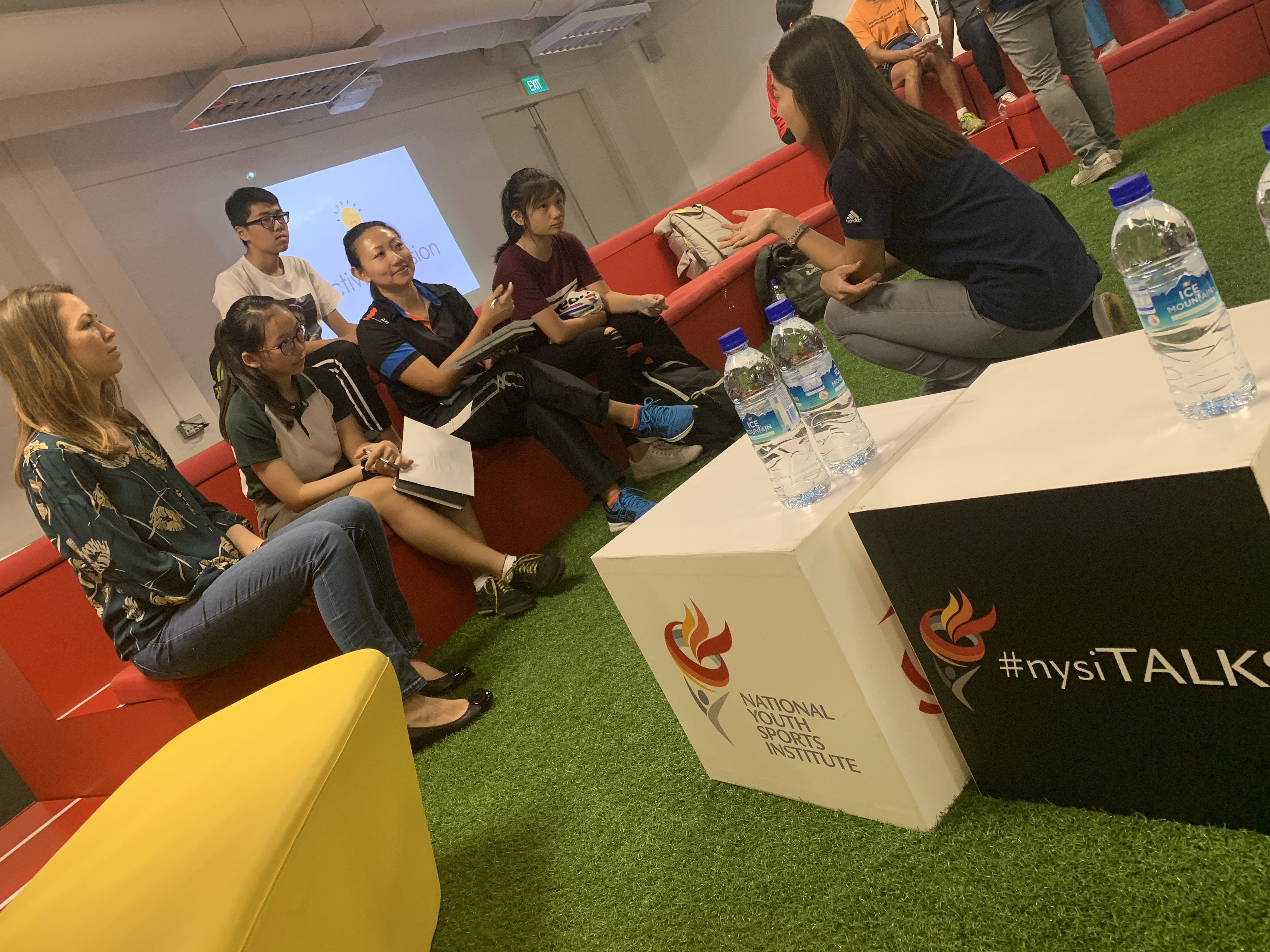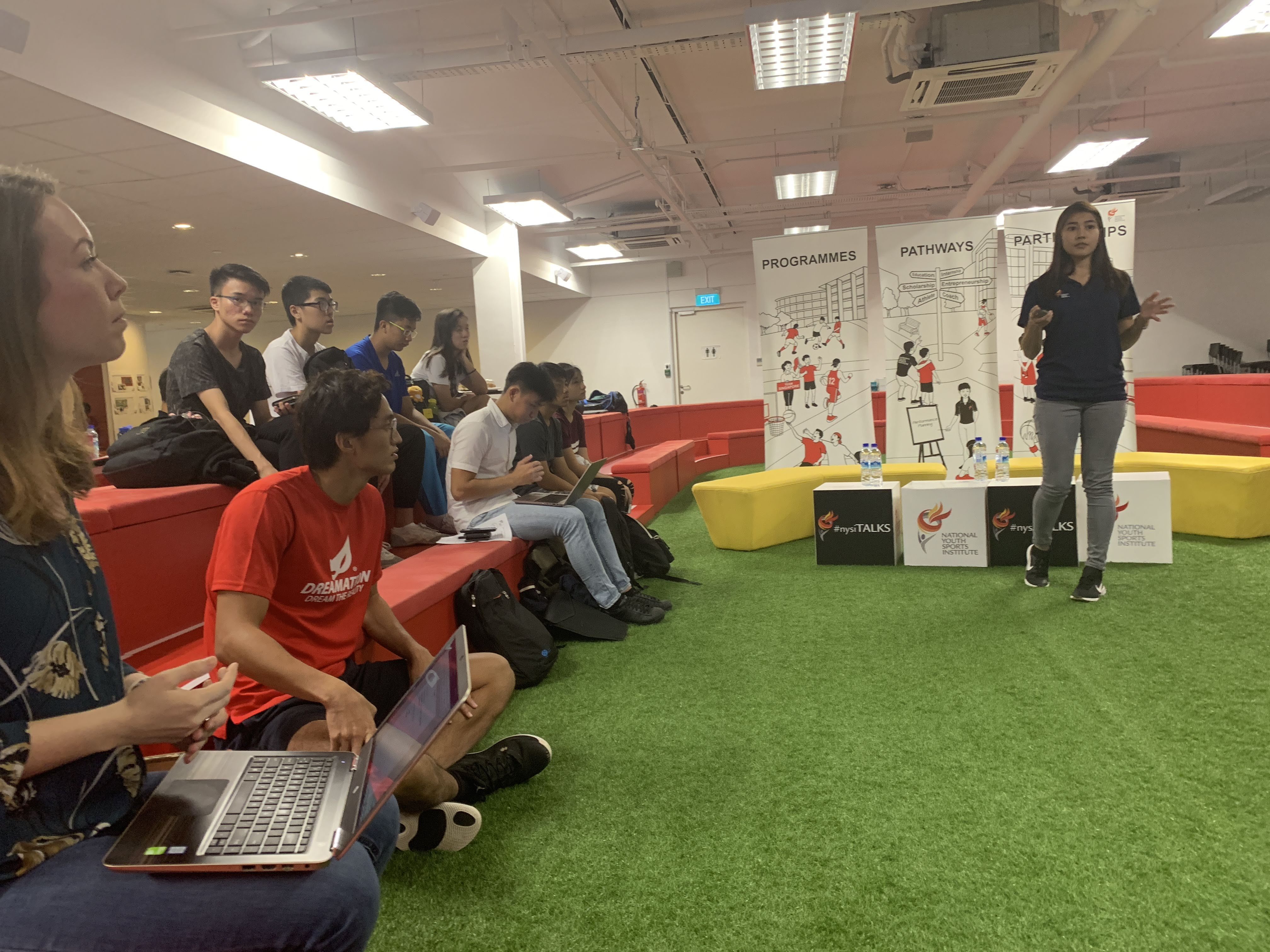NYSI Post-Secondary Huddle 2019
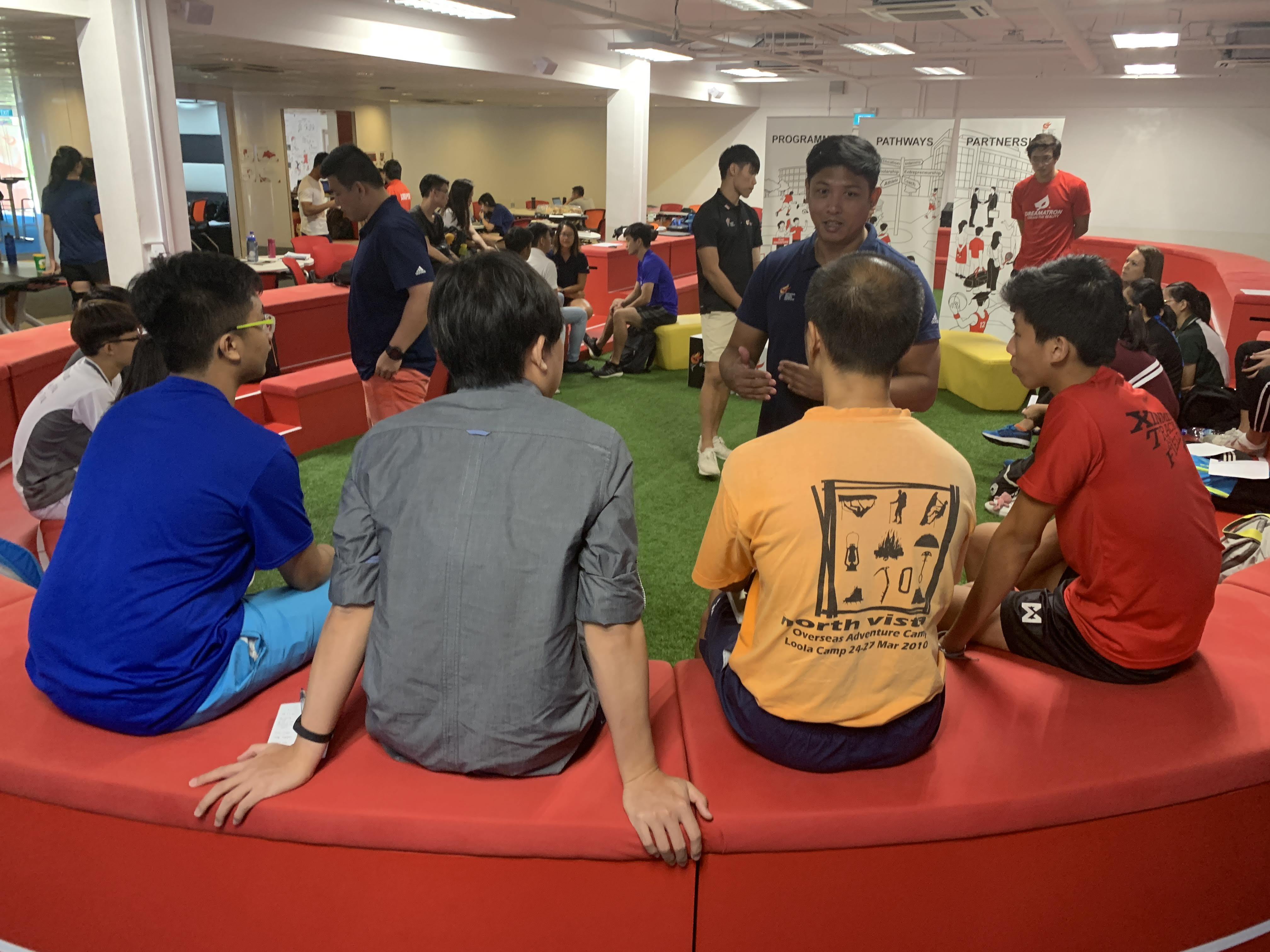
Ismail Kadir, of NYSI Athlete Life interacting with participants.
The National Youth Sports Institute (NYSI) held a Post-Secondary Education Huddle for youth athletes to help them find out more about the different pathway options available. The student-athletes, aged between 16 and 18, learnt about the advantages and disadvantages of the different pathways.
The student-athletes learnt that the polytechnic route allows a higher chance of balancing sports and studies.
“In poly, the timetable is very flexible. It allowed me to train up to 10 times a week which aided my sporting career,” said national beach volleyballer, Kingsley Tay, 24, who studied at Temasek Polytechnic and is now an undergraduate at the Singapore University of Technology and Design. “As long as I concentrated during lessons, the exams in TP were not a problem.”
Another student-athlete, Khor Ting Fang, 23, shared her experience in junior college.
“If you're not yet sure of what you want to study, then the extra two years of generic subjects offered by JC allows you to figure out your academic interests,” said Ting Fang, a former student-athlete at the Singapore Sports School and who is in her final year as a Sociology major.
“Also, a greater proportion of JC students enter university, so it's a pathway to take if you're aiming for university. Naturally, JC is much more academically demanding as compared to other pathways, so it can be rather stressful. If you're not comfortable with having a high-stakes, do-or-die examination format, then the A-Levels may not be right for you,” added Ting Fang, who is in the Singapore Netball Open’s squad.
Adlan Syadad Bin Mohamad Yani, 20, a former student-athlete in Singapore Sports School, gave the student-athletes a better idea of the International Baccalaureate (IB) diploma.
“The IB curriculum is structured in such a way where it requires consistent work throughout the two years. There’s a lot of writing involved but it’s work that you can do at your own time. As long as you manage your time properly, deadlines shouldn’t be too hard to meet. So that gives a bit of flexibility to do your sport at the same time.
“The A Levels, I feel, is a bit more content heavy. Also most of the workload is focused on the final paper at the end of year 2. Some people prefer this. Many like less stress in their first year to explore things outside of their academics, then focus more on studies in their second year,” added Adlan, who was in track and field.
One of the challenges for a student-athlete in Singapore’s competitive education system is balancing sports and studies.
“Having the freedom and free time in the curriculum may not always be a good thing,” said Kang Jun Jie, 20, who is a student-athlete studying for the Diploma in Sports, Health and Leisure offered by Republic Polytechnic as part of the Singapore Sports School through-train programme.
“if you are not determined enough to want to do well, you would slack off and you’ll start to see your performance in both sports and studies deteriorate. I have many friends that used their free time to play games and do other stuff instead of revising which resulted in them flunking their studies.”
Adlan also made it a point to balance his sports and studies well.
“For me I was able to juggle sports and studies quite well throughout the two years (of IB). There was never really a point where I had to compromise one for the other. Only when it came to my final papers in my second year that I decided I could afford to cut down on training a bit to focus more on academics,” said Adlan.
“I think it's important to know when to focus on sports and when to focus on your studies,” said Ting Fang. “Post-season, if you need to stop training and prepare for your exams, you have to do it. Having the discipline to focus on different things at different times would go a long way in helping you balance all the commitments you have on hand. It doesn't hurt to plan your sporting and academic calendar ahead of time as well!”
Golfer Ng Wei Jun, 15, from Kranji Secondary School, who attended the Huddle, said, “I think [the Huddle] was really useful to me in terms of … thinking of what course in the future. I do golf which is a pretty long-term development sport, so for now I’m directing myself maybe more towards academic, so I'm planning to go to JC.
“Before this Huddle, I wasn’t really sure whether I wanted to go to JC or poly. A lot of my friends say poly is a way better choice than JC if you really want to pursue the sport. But I think for now, I'm doing decently well in my academics so I think I’ll go towards the JC path. Yeah so this [Huddle] really helped me fixed my mindset on what I want to do in the future. I also learnt a lot from the experiences that the guest speakers shared with us as their journey of being a student-athlete was something I didn’t know about before coming for the huddle.”
Fencer Jermaine Tan, 16, from Greendale Secondary School, said, “I think it's quite informative because initially, I only thought of going to a JC but now I have found out that poly also has good points like more time for training. Maybe if my aggregate score is not very low, then I can go to a poly and do better there.”
To find out more about pathway options, head over to the National Youth Sports Institute website.
To find out more about scholarships, head over to Brightsparks.
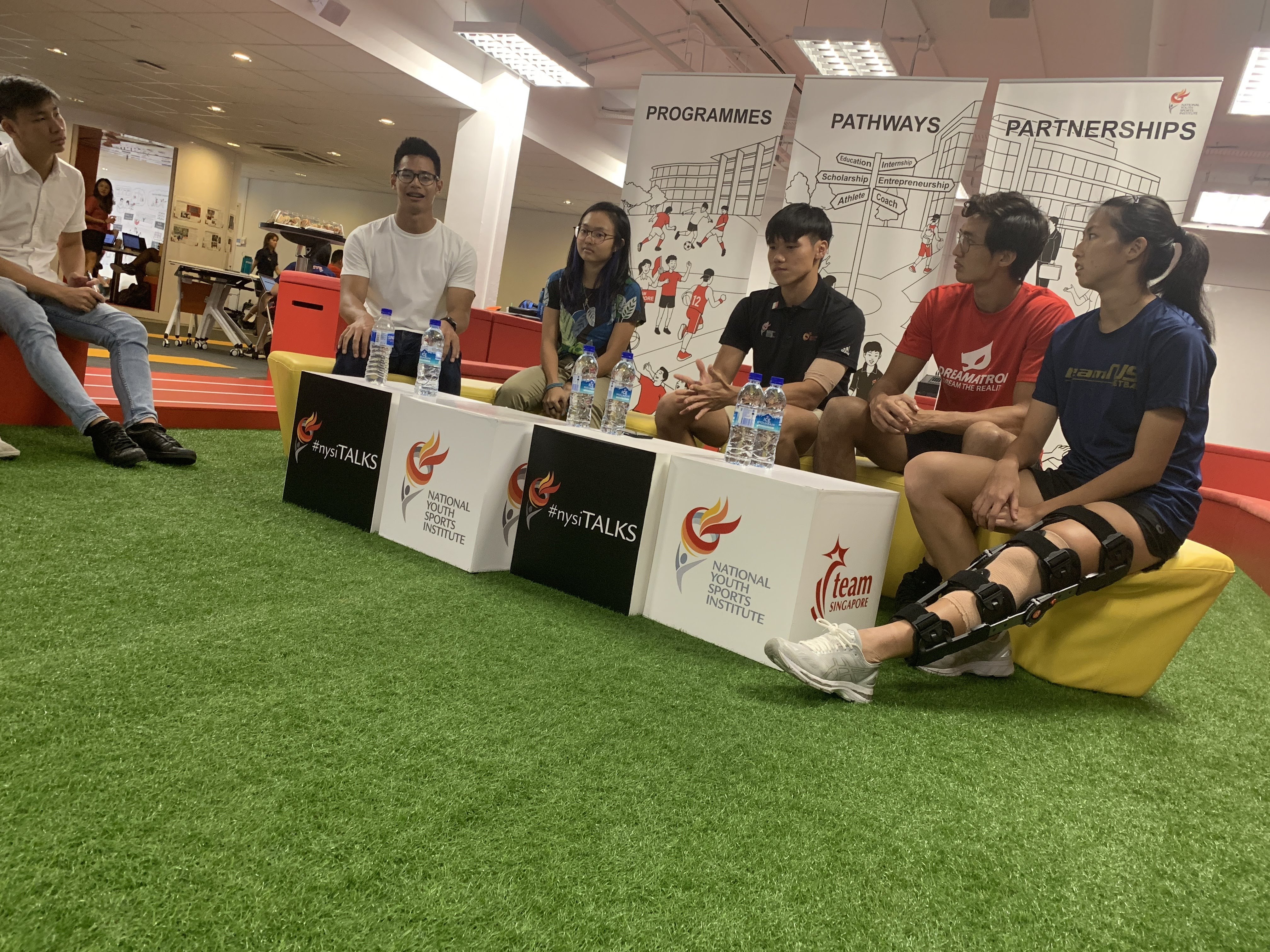 From left to right: Adlan Syadad (Ex IB-SSP) Celeste Goh (Ex IB-SSP) Kang Jun Jie (RP-SSP DSLM) Kingsley Tay (Ex Poly Student) Khor Ting Fang (Ex JC Student)
From left to right: Adlan Syadad (Ex IB-SSP) Celeste Goh (Ex IB-SSP) Kang Jun Jie (RP-SSP DSLM) Kingsley Tay (Ex Poly Student) Khor Ting Fang (Ex JC Student)
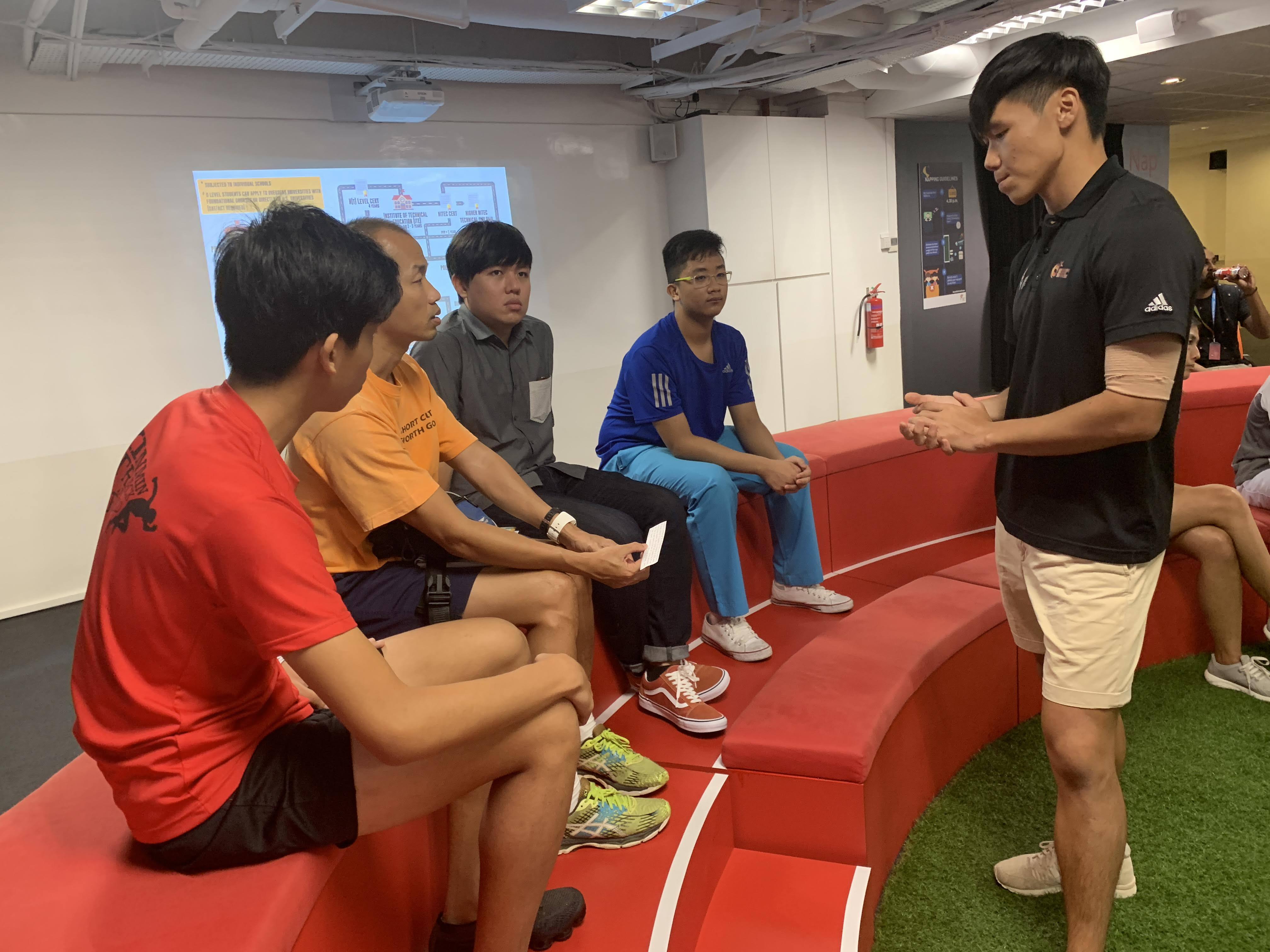 Kang Jun Jie, of NYSI Athlete Life sharing insights with the participants.
Kang Jun Jie, of NYSI Athlete Life sharing insights with the participants.
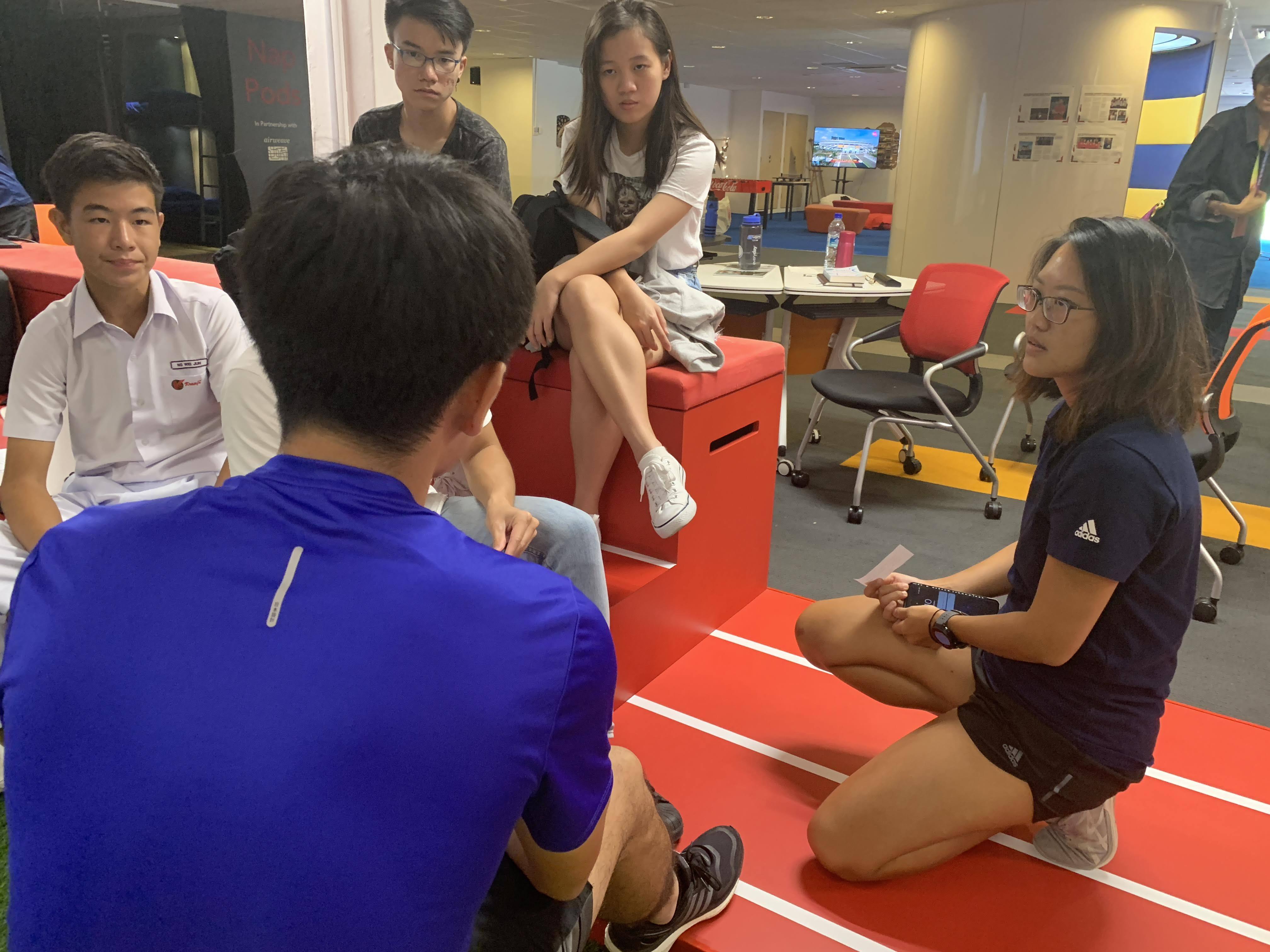 Amelia Tan, of NYSI Athlete Life facilitating one of the activities with participant.
Amelia Tan, of NYSI Athlete Life facilitating one of the activities with participant.